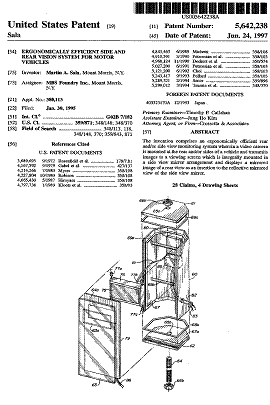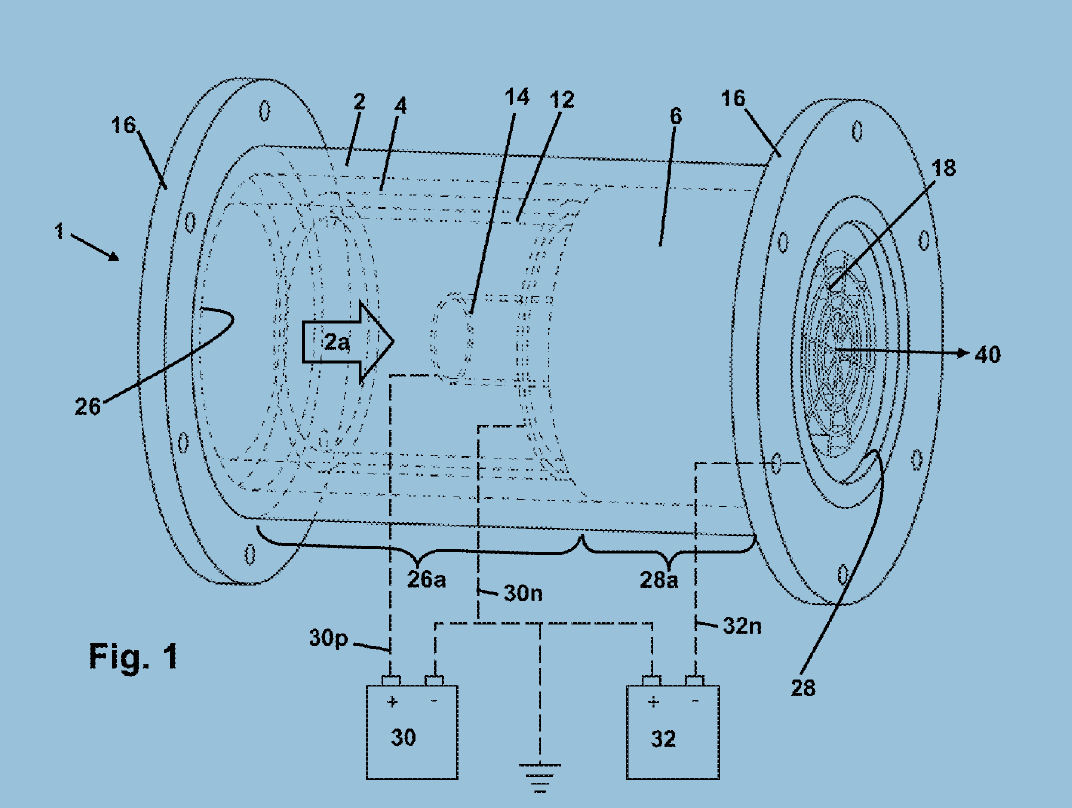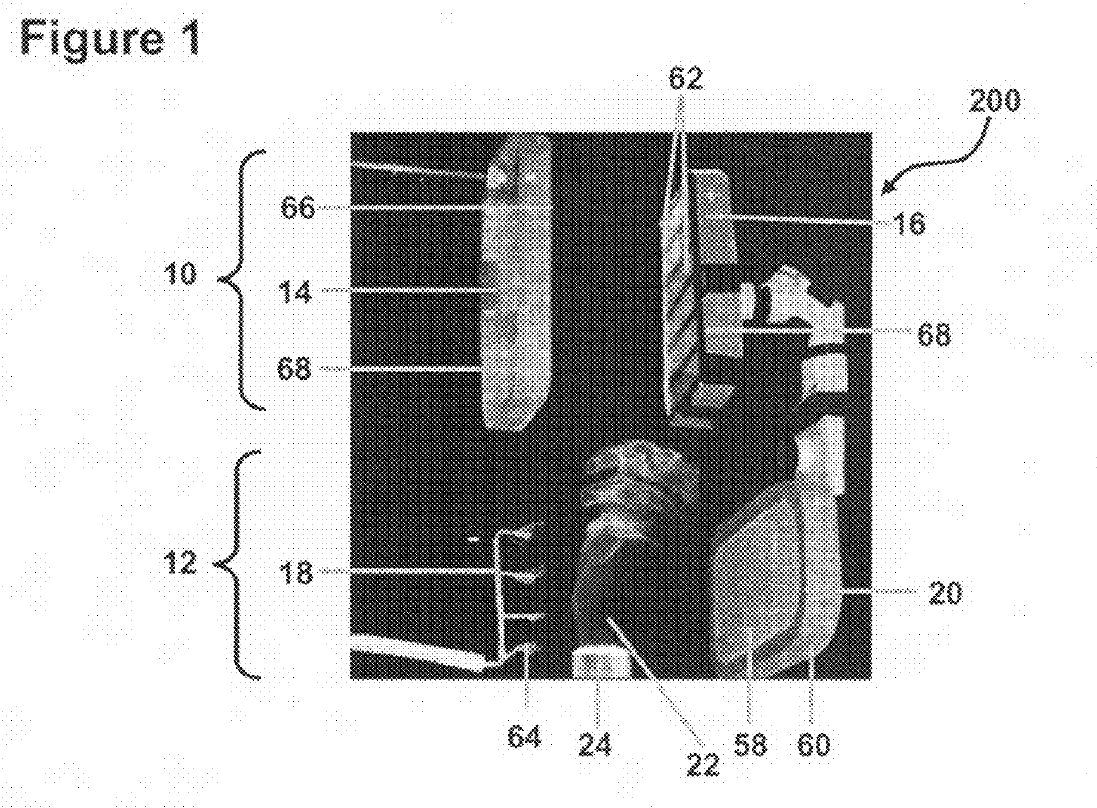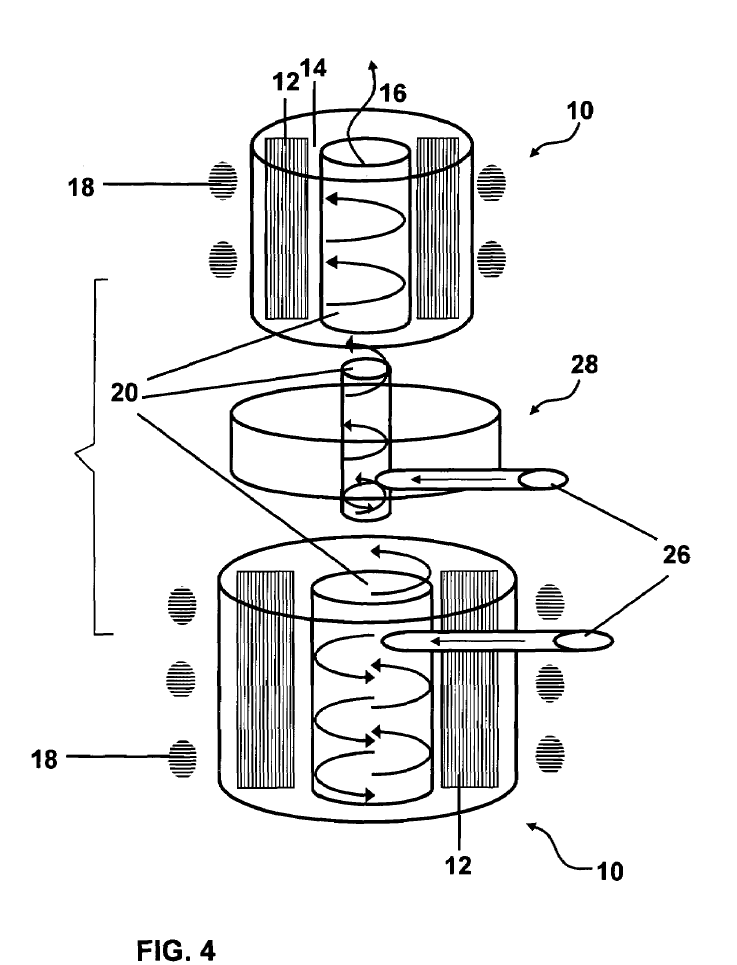US Patents Held
 Patent PDF
Patent PDF
Martin Sala's Rear-Vision System from 1995
ENGINE EXHAUST GAS REACTORS US 7,959,883 B2
Jun. 14, 2011

Engine Exhaust Gas Reactor
NANOMATERIALAND METHOD FOR
GENERATING NANOMATERIAL
Pub. No.: US 2010/0316882 A1
Pub. Date: Dec. 16, 2010

Nanomaterial Generator in Atmosphere

Apparatus for synthesis

Inventions that were not Patented, but Used to Solve a Problem

Coefficient of Friction, Twist Method
National Ignition Facility (NIF) and Star Trek

The square-shaped piece of glass in this image is made from High Purity Fused Silica (HPFS) seen in-the-raw below. If you've ever used a LASER pointer, it's beam diameter is about 0.125" across. The NIF LASER beams are 18" across and so intense that even a 0.5µ spot will cause the 3" thick lens/ optic to explode! Martin Sala designed, built, tested and deployed a Scanning LASER Interferometer that located these imperfections, generated a map, and then allowed technicians to "mine" optically pure glass from a boule as seen below.
The factory was having difficulty delivering the quality of glass required by NIF and Martin's contribution made NIF and Star Trek possible!
Using ultrasonic techniques and Fourier-techniques, a "displacement" map was abel to be created, showing the operators where, and how much, the glass was bowing. An additional feature was an ability to sense "missing" flow and gross defects defining a catastrophic failure in the draw, and a rough (within 50°C) of temperature.
In 1991 I developed to the point of submitting an application for US Patent for a machine that delivered facsimiles in a sealed envelope and addressed with the recipient's name.
A fax would arrive and if to be a "private fax" address data from the cover-sheet was printed on the front of an envelope. The fax was then "stuffed" into the envelope, was sealed and delivered to the outside world.
But think of it: Nobody could read your fax without violating physical security means!








.jpg)


